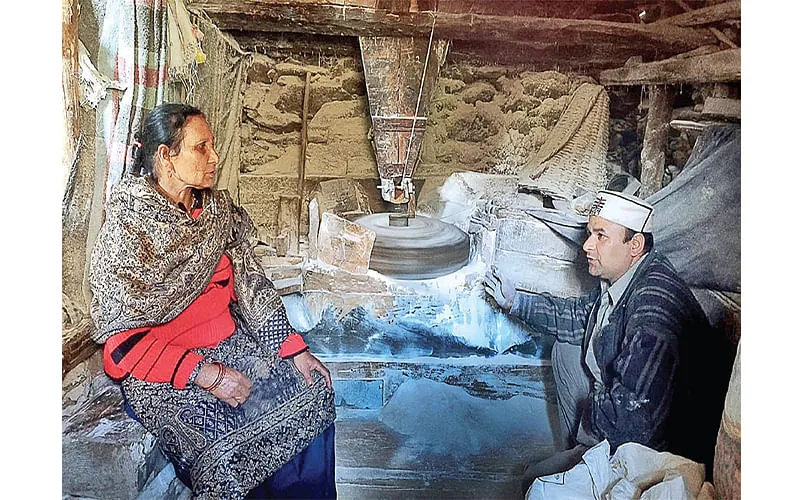Bhaderwah: Traditional water mills, popularly known as “Dhadats” or “Gharats” in Jammu and Kashmir’s Bhaderwah region, are an ancient and still the only mode of grinding wheat, corn, and other grains to produce flour in rural areas in absence of electric mills.
Despite the advent of modern technology in grist mills, ‘Dhadats’ is the only option to grind grains (Wheat and Maize) for the residents of 6 villages (Mathola, Tapri, Shankhoja, Banzala, Banni-Batoli, Chakka, and Upper Dandi ) consisting nearly 7,000 population scattered on slopes on Eastern hills of Bhaderwah Valley.
Residents of these hilltop villages are a worried lot and up in arms against the administration. They allege that officials of ‘Jal Shakti Vibhag’ without considering saving the traditional and only natural source of producing energy are diverting the water of Mathola river in an unplanned manner.
“They could have easily tapped the water a few hundred meters downstream, from where there is no ‘Gharat’ but only to increase the cost of the project to lay gravity lines, 8 Gharats got closed on Mathola river leaving a large number of the population face the hardships,” said Lumberdar of the area Vinod Kumar (48).
Department has already collected 50 percent of the water from the river as already 3 gravity lines are operational resulting in the closure of 8 water mills.
“Now only 2 Gharats are operational which cater to 2000 households and if they go with another gravity line for which they are already laying pipes, these will also get closed,” Kumar added, demanding that the water be tapped 300 meters downstream from the ‘Gharats’.
The government through the Ministry of New and Renewable Resources’ is putting a lot of impetus on harnessing different sources of natural power for Prosperous Rural India and by generating it from clean, renewable sources.
“On one hand the government every now and then comes up with policies and schemes to encourage traditional and ancient modes of using water energy but on the other hand some officials for their petty interests seem hellbent on permanently damaging them,” said Simmer Singh (47) of village Mathola.
Traditional water mills are a blessing for the people as they get their grains ground at very nominal rates. When the mill begins work, the water is diverted towards the water mill, and once the day ends, the water is diverted downstream again.
The mill is powered by fast-flowing water from the nearby river, which turns the heavy grindstone to produce flour. The force of the water flow drives the blades of a turbine. It rotates an axle that drives the crushing stone. The passage of water is controlled by sluice gates that allow for maintenance and control of the speed of grinding stones. This is the historic way of grinding maize and other grains and a symbol of the rich cultural history.






